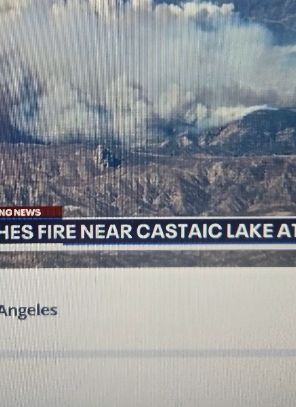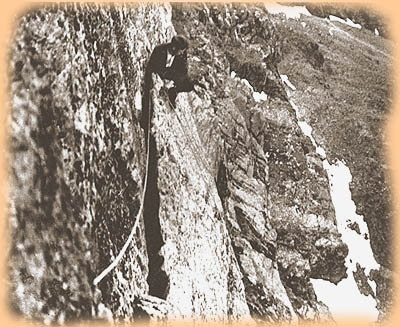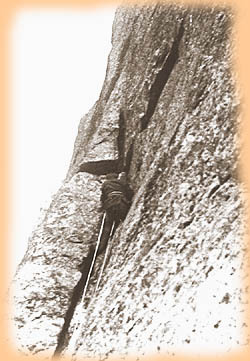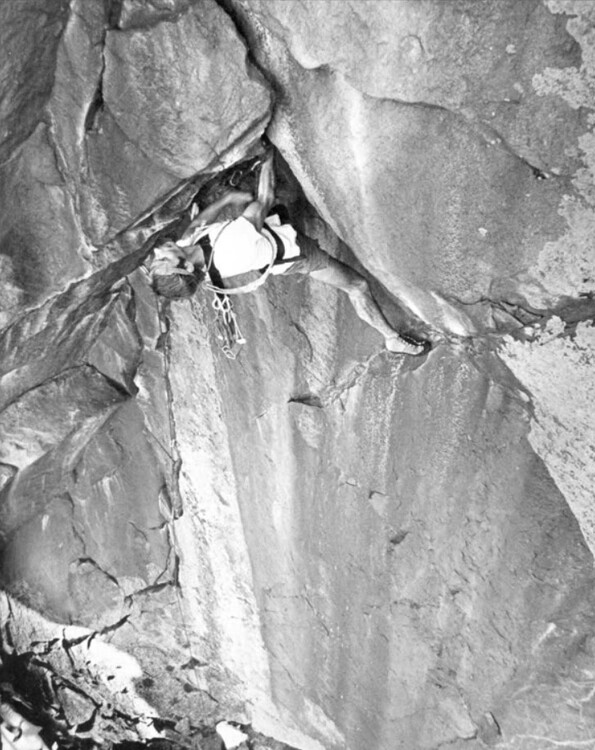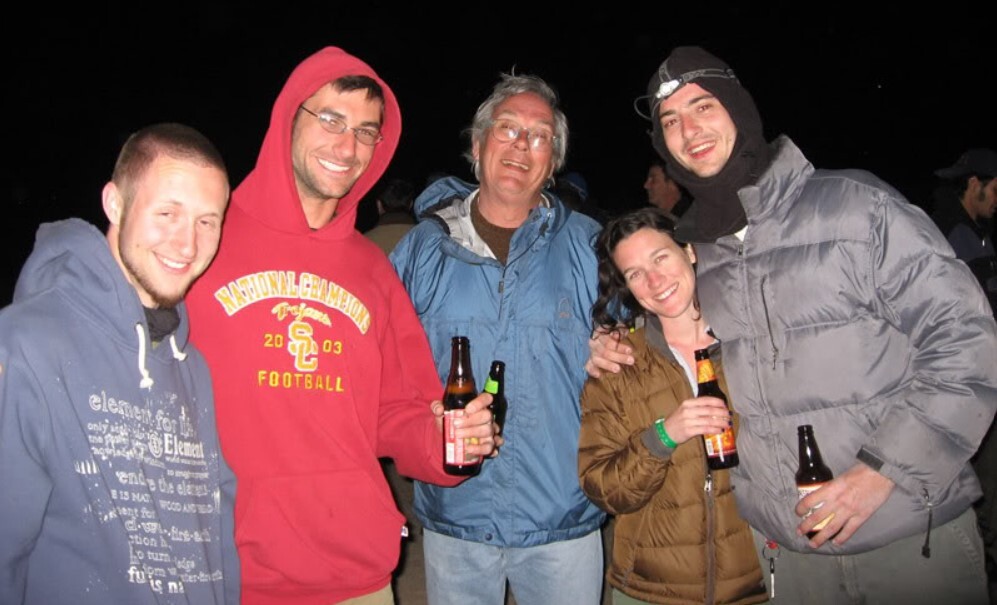New and Experienced Climbers over 50 #33
|
|
Guy, I hope that fire stays north of you. |
|
|
This is about 8 miles from me… Knowing this I’m not worried, lots of burning to do before it gets to Moorpark. But the real concern is that one of the secret crags (center bottom) is right in the burn. |
|
|
Guy, hopefully you stay safe! |
|
|
Guy Keeseewrote: Glad it's 8 miles away, but still... Stay safe. |
|
|
Stay safe Guy. 8 miles doesn't seem far in fire country, especially with those strong winds. |
|
|
Stay safe Guy! Thinking about you and all the people I know and care about in So Cal. |
|
|
Todd Berlier wrote: LOL! I'm glad the Internet didn't exist when I was that age. |
|
|
Pretty good live coverage of the Hughes Fire here: |
|
|
Lori Milaswrote: Yes, "Intention" seems to be a key to success. But that doesn't mean thinking and speculating about the intended. In the Art of Dreaming I remember forming the intent to see my hands when going into the hypnagogic state, then simply forgetting about it. It worked the first time. And the experience left me stunned, thinking, So there is something else! In that altered state I felt I was pure will. I used this approach to a few climbs over the years, forming an Intention, then allowing it to slide into the subconscious, not dwelling on it. Bob Gaines: Practice downclimbing on moderate highball problems, and develop a foundation for mental control when you need it the most. Using sound judgement- knowing when to back off- is a hallmark of a solid leader. Downclimbing seems to be a lost art (or skill). Siegfried Herford who was a top climber in the Edwardian era in England was a staunch advocate and wrote an article, "The Doctrine of Descent". I never tried to cultivate this skill, and didn't know others who advocated it, except perhaps Herb and Jan Conn. Here is Siegfieid downclimbing a famous pitch before climbing it from below. Guy, hope you and your home stay safe. (Lori) I would ask this group these same questions. What’s important to you now both in Climbing and in life. Maybe you just wing it? How many here thoughtfully planned out your next moves? At 87+ I look at this from the other side. I quit climbing in the early 2000s after I retired from teaching and had no remorse because I had projects planned for my future. I kept up some bodyweight exercises - which I still do in a limited manner - and delved into the history of rock climbing plus some rather trivial math projects. I also divorced and remarried and enjoyed traveling in the US with my wife, Nancy. I have several old climbing friends who haven't climbed in years and have "End of life projects" that are never quite completed, always being polished and improved. Don't get discouraged by my words. I'm simply saying there is life after climbing. Fossil, photo taken by my father in N. Georgia in 1953 or 1954. My first climbing shoes: J.C.Higgin's work boots with red rubber lug soles. |
|
|
I’ve read an interview with you John where you talked about lucid dreaming and all that stuff and I could totally relate to what you said. I originally thought that it was all bullshit until I read the books in my 20’s and gave it a try. I was really into it for years. I had the most success when I had everything in my life tightened up. I would sleep normally for six or seven hours, then wake up and intend to lucid dream or leave my body. Hard to explain to people who have never experienced it. |
|
|
John, you wrote that you 'never tried to cultivate' the down climbing skill', yet didn't you also work bouldering projects, such as the Timble, so that you could always down climb if necessary---and did such down climbing frequently before committing to a crux? If that information is accurate, then it seems that this was indeed a skill that you utilized to very good effect. And, fossil, no pictures of me, as I have never been 'important' enough to photograph ( though rgold has posted some). And in that group photo with Rich that you posted, from the SD Needles, I'm presuming, his first wife was Evelyn--Evy. |
|
|
I enjoy the follow. Many different people with different views and experience. Couldn't ask for a better fire to sit around and absorb the experiences. I admit I'm a history fan of climbing so keep up the good work. |
|
|
John, this is really special that you have shared so much about your life. I would not have taken you for a lucid dreaming kind of guy until seeing your reference to Castaneda and the power of Intention. I’m so glad you are enjoying these years. You and rgold light the way ahead for those of us who are sort of bumbling around. I didn’t know it before, but I do now that there will be wonderful things ahead even when climbing is through. We have kind of joked about steep face climbing being a kind of Jedi magic. While I have not been the best apprentice and so far have failed to levitate, I do think we are all practicing to be magicians in this group. Jan has often mentioned belief as key to getting up the impossible. I realize that especially when I share a picture or story with friends of mine or family and they say “you did what?”. The fact that anyone our age group is out there doing what they do to me is proof of magic. Ward, you mentioned always needing a project and how your boulder in Arizona keeps you working hard. That is some motivation! I feel this way too. Setting my heart on something just beyond my limit keeps me willing to eat right, sleep right, workout, even when I don’t want to. |
|
|
Ward Smithwrote: I can relate to this. It may seem odd for someone my age to start focusing more on bouldering but I had done most of the stuff on a rope that I could do close to where I lived. There are lots of boulder problems I haven't done though and picking one out and projecting it keeps me motivated. |
|
|
Alan Rubinwrote: First, I never considered the Thimble a boulder problem. It's ironic that others saw it as one. At the time I was still in what I much later realized was the Paul Preuss perspective, what these days might be called free solo exploration. I saw this as an ultimate type of climbing and was seeing what my limits were in this regard. And you are correct. I did go up and down a bit on the bottom half, so, yes I practiced a little downclimbing without specifically training to do so. If I had needed to get off the upper part I would have moved left onto a much easier climb. Other actual boulder problems were not as high and a downward few moves was hardly downclimbing, which I might have meant climbing down a long pitch, reversing moves, had I given any thought to it. A longer free solo exploratory climb I did was a long route on the south face of Storm Point, rising out of Cascade Canyon. It's funny, I have no real memories of that climb. At the time I told Yvon about it and he took a young woman up another new route on the wall. During the 1990s I made several trips back to the Tetons, soloing some things I had done long before. I did recall the start of the Storm Point climb, so I climbed the first section, but when I reached the second pitch I could not remember where I had gone years before. At the age of about 60 it all looked and felt a bit intimidating, so I rappelled down. |
|
|
John Gillwrote: John, my understanding is that the Conn's felt you hadn't properly done a climb if you didn't also downclimb it. I do wonder whether they applied that to the South Tower of Spire 4 and the East Face of the East Gruesome, but I think they allowed themselves to leave anchors and have an upper belay for at least some of the harder stuff. We did a lot of downclimbing BITD in the Gunks. Fritz Wiessner would solo up Northern Pillar and then down Southern Pillar in his early eighties. (I could do this too---but I don't.) Three Pines was regularly soloed down after the routes on the Macarthy Wall. Silly Chimney too after the Yellow Wall and Double Crack. Harder climbs were "downled," meaning that the first person down placed pro for the "leader" who came down second. The game was to climb up something, walk a short distance along the top, and then climb down something else. And there was even a U-shaped climb or two, eg up Shitface and then down Roseland in one ropelength. |
|
|
fossil wrote: Thanks for this, fossil. I very much remember that photo of Roger Briggs from my younger years of avid perusal of any and all climbing literature. Where did I see it? Wasn’t that published in Climbing? Or some other place? It is an iconic photo and super inspirational. Who was the photographer? |
|
|
John Gillwrote: For context to John's excellent post, this is The Great Flake pitch on Central Buttress, Scafell, England which I finally climbed four summers ago. A most impressive achievement for 1914: his second picture shows the climber about to embark on the crux, a burly layback that would be around 5.10b at Joshua Tree. Not the easiest style to down climb. Some contemporary climbers avoid the wide crack by taking the face out left, which is more to modern tastes, have they no sense of history?! Central Buttress, 2021 style. |
|
|
Daniel Joderwrote: I remember it too. Pretty sure it was a series of photos in Ascent. The caption said something about the route being unrated due to the controversial nature of modern climbs. Guess I must have drooled over that magazine for a while! |
|
|
Daniel Joderwrote: This, and a second photograph, appear on pages 197 and 198 of 'CLIMB!', together with Briggs' FA account. There are no individual photo credits, suggesting that they are the work of one or both of the authors - Bob Godfrey and Dudley Chelton. Their acknowledgement of Briggs' assistance in getting photos for the book supports this suggestion. |

 Continue with onX Maps
Continue with onX Maps Sign in with Facebook
Sign in with Facebook





















